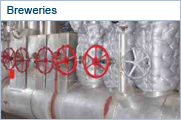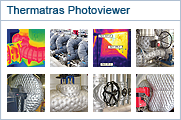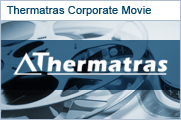Steam
Steam installations are used in large building blocks and in industry. Steam is crucial to production processes in industry. Finally, the correct pressure, or correct temperature, must arrive at the place it is needed.
The steam path starts at the steam boiler (flame boiler or water pipe boiler), gas boiler, steam generator or steam converter and carries on through the steam distributor or steam reducer to the appropriate user, such as the heat exchanger, drier or other piece of equipment in the production process. Once the steam has emitted its heat, condensation accumulates in the steam trap, in other ancillaries and pipes which gathers in the condensation trap. From there, the condensation, together with fresh water (supplementary water), is directed via pumps to the degasser. To prevent corrosion, oxygen and carbon dioxide are partially removed here by spraying the water and heating it to 105°C. This heated condensation is then transported to the steam boiler to be used as feedwater.
Superheated water Superheated water or hot water installations work by putting the water under pressure by heating it in the production process to temperatures of between 100°C and 180°C. Superheated water systems are very stable because overpressure is created, resulting in a rise in the boiling point. Hot water stays under pressure in the system, even after heat emission to the users, and therefore no condensation forms. The system is simple and efficient and resembles thermal oil installations in terms of its technical installation.
Examples of production processes using steam or superheated water:
- pasteurising, preheating, sterilising, evaporating, dehydrating (dairy industry)
- boiling, pasteurising, bottle and barrel cleaning equipment (breweries)
- boiling, smoking, grilling, maturing, drying (meat processing industry)
- cleaning (CIP systems “cleaning in place”) in all sectors of the food industry
- food pressers (mixed feed industry)
- dyeing, drying and pressing (textile industry, carpet industry)
- cellulose preparation, pressing, drying (paper industry)
- autoclaves (calcium silicate and canned foods industry)
- refineries, wet and dry melting (margarine, fats and oil industry)
- reactors (chemical industry)
In the steam and hot water installations mentioned above, ancillaries are often no longer insulated, badly insulated or not insulated at all. Thermatras® insulation blankets increase the efficiency of the installation and reduce the dissipation of heat through exposed ancillaries.
Click here to open Thermatras® photoviewer.











